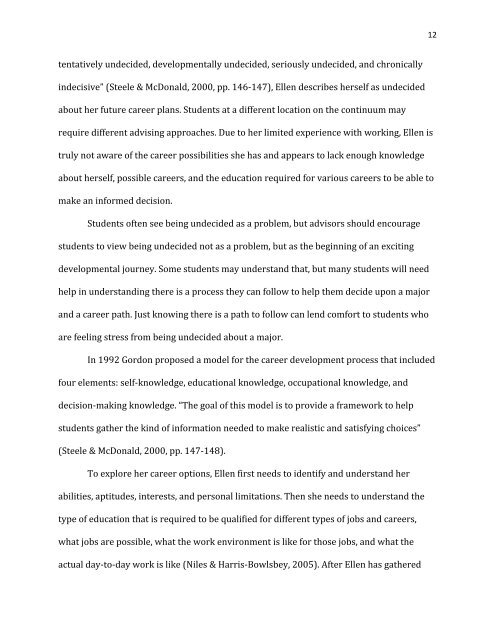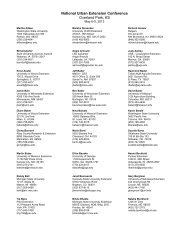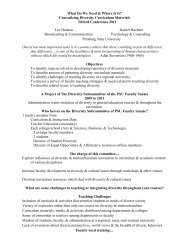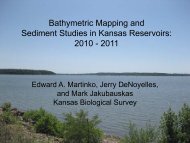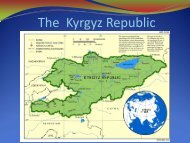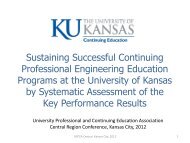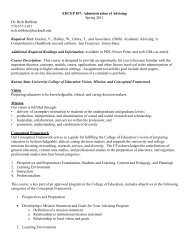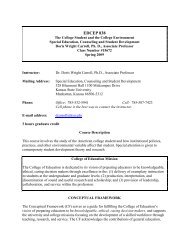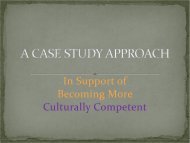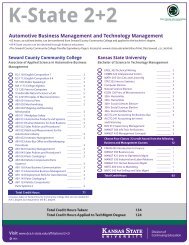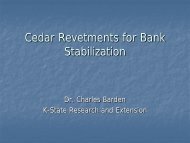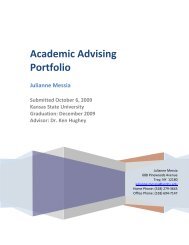David Freitag – KSU Capstone Project - K-State Division of ...
David Freitag – KSU Capstone Project - K-State Division of ...
David Freitag – KSU Capstone Project - K-State Division of ...
Create successful ePaper yourself
Turn your PDF publications into a flip-book with our unique Google optimized e-Paper software.
tentatively undecided, developmentally undecided, seriously undecided, and chronically<br />
indecisive” (Steele & McDonald, 2000, pp. 146-‐147), Ellen describes herself as undecided<br />
about her future career plans. Students at a different location on the continuum may<br />
require different advising approaches. Due to her limited experience with working, Ellen is<br />
truly not aware <strong>of</strong> the career possibilities she has and appears to lack enough knowledge<br />
about herself, possible careers, and the education required for various careers to be able to<br />
make an informed decision.<br />
Students <strong>of</strong>ten see being undecided as a problem, but advisors should encourage<br />
students to view being undecided not as a problem, but as the beginning <strong>of</strong> an exciting<br />
developmental journey. Some students may understand that, but many students will need<br />
help in understanding there is a process they can follow to help them decide upon a major<br />
and a career path. Just knowing there is a path to follow can lend comfort to students who<br />
are feeling stress from being undecided about a major.<br />
In 1992 Gordon proposed a model for the career development process that included<br />
four elements: self-‐knowledge, educational knowledge, occupational knowledge, and<br />
decision-‐making knowledge. “The goal <strong>of</strong> this model is to provide a framework to help<br />
students gather the kind <strong>of</strong> information needed to make realistic and satisfying choices”<br />
(Steele & McDonald, 2000, pp. 147-‐148).<br />
To explore her career options, Ellen first needs to identify and understand her<br />
abilities, aptitudes, interests, and personal limitations. Then she needs to understand the<br />
type <strong>of</strong> education that is required to be qualified for different types <strong>of</strong> jobs and careers,<br />
what jobs are possible, what the work environment is like for those jobs, and what the<br />
actual day-‐to-‐day work is like (Niles & Harris-‐Bowlsbey, 2005). After Ellen has gathered<br />
12


